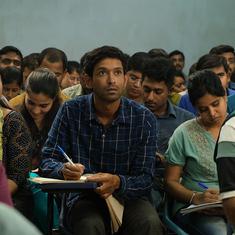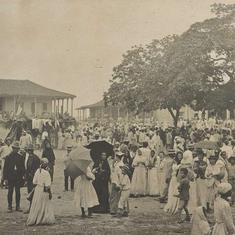“Jan-e-Alam, a businessman, was distributing biscuits at Teknaf bus terminal in Bangladesh’s Cox’s Bazar district on Sunday. ‘I came here from Sitakunda on Thursday to help the refugees with money and dry food,’ he said.”
This paragraph appeared in the Dhaka Tribune, a leading Bangladeshi newspaper, in September 2017. The report titled “Bangladeshis stand by Rohingya refugees” tell us a moving story of how the country welcomed the refugees fleeing persecution across the border in Myanmar.
The report continued: “Local youth groups have been giving juice, dry food and water to Rohingya who had taken shelter on the Shah-Puri Island after crossing the Naf River several days ago. Later, the locals sent them to Teknaf, where they were greeted by friendly residents”, the report pointed out.
Exactly two years later, attitudes have changed a lot. Many Bangladeshis have started loathing the word “Rohingya”. Being a member of this persecuted community is now become a sort of a crime in Bangladesh. Thanks to xenophobic media coverage of the issue, the malnourished people who fled a brutal military crackdown in their homeland and are now living in impoverished conditions in camps in Cox’s Bazar are widely considered a “menace”, a “threat to national security” and “conspirators who want to occupy Bangladesh”.
Student suspended
Last week, a Bangladesh university suspended a student for being Rohingya. Cox’s Bazar International University said it had suspended Rahima Akter Khushi, a 20-year-old woman who was born and brought up in Bangladesh after her parents fled to the country in 1992, and would investigate her case. The university authorities had come to know from media reports that Khushi had hidden her Rohingya identity to enroll in the institution.
The institution’s head Abul Kashem told AFP, “Rohingya can’t be admitted to our university, because they are refugees.”
Though formal education in Bangladesh is forbidden for refugees, a few of Rohingya managed to make it to higher secondary schools or even to universities. This was a kind of open secret and wasn’t seen as a problem because Bangladeshis were widely sympathetic to the community – until recently.
Rahima Khushi had previously given interviews to national and international media outlets without hiding her identity. This did not her any problems. In October 2017, when I visited the Rohingya camps as a reporter, I had the opportunity to work with this energetic young woman for a few days. Many local journalists also knew her well and worked with her as a source of many information about her community.

This change of sentiment – from “guest” to “menace” – towards the community is mainly the result of charged media coverage. When it comes to covering the Rohingya people over the last two years, the Bangladeshi media has reflected an increasingly nationalistic undertone, which hit the peak from late August this year.
On August 22, the Bangladesh and Myanmar authorities failed to kick off repatriation process for the second time . This was due to the unwillingness of the Rohingyas to return without some conditions – ensuring their security and being granted citizenship in Myanmar’s Rakhine, among others – to be fulfilled.
The hesitation of the Rohingya was not quite surprising. The international community supports their demands, which are perfectly justified, and urged all parties in the repatriation process to fulfill them before sending the refugees back. This advice was not heeded. Myanmar, which is accused of genocide against its population, has done little to curb the fear of the refugees and create an atmosphere that would encourage them to return to their homeland. Bangladesh has also failed to compel Myanmar to accept these conditions which could help earn the trust of more than one million people.
NGOs expelled
The failure sparked the anger of the Bangladesh government and suddenly it appeared to be hard-handed on the refugees. Foreign Minister AK Abdul Momen immediately warned the Rohingyas of about “lessening comfort” in their camps. Within days, mobile phones were banned, internet access was cut and 41 NGOs working to improve the camps’ poor condition were expelled.
As the government took a tougher position against Rohingyas, the Bangladeshi media, which enjoys severely curbed independence, suddenly started an onslaught against the refugees with reports filled with misinformation, half-truths and conspiracy theories. Some news outlets went so far that they even used words like “danger” and “threat” in their headlines about the Rohingya people.
On August 25, Rohingyas held a rally in the camp area to commemorate “Rohingya Genocide Day” on August 25. The following day, a leading newspaper ran a front-page story headlined “The Rohingya showdown: conspiracy to destabilise the country.” However, the Rohingya had observed the occasion in same fashion the previous year. Earlier this year, they had held another big rally in the camp area. But the media did not see those rallies as a showdown or a conspiracy at that time.
In late August, the site of a leading TV channel published a headline reading, “Rohingyas turned into a threat.” A national daily’s lead story declared, “Endangered for being compassionate”. The same headline was used in a TV report too. “Rohingya-fear everywhere,” said the front page of a daily newspaper. “Socio-economic losses due to Rohingyas,” was an opinion piece published in another renowned newspaper. An article on a leading online portal read “Rohingya: The pus must be washed out right away”.

On August 27, a number of leading newspapers and TV channels carried out what seemed to be a coordinated campaign that claimed that a stock of agricultural equipment owned by an NGO and stored in a Teknaf shop was actually a weapons consignment for the Rohingyas.
Mukti Cox’s Bazar, an NGO that distributes agricultural support equipment
to Bangladeshi farmers in the district, was preparing a delivery for its clients. A local journalist, who is also a ruling party leader and known for his anti-Rohingya stance, posted some photos of the equipment on his Facebook, claiming that it was actually “weapons ready for being delivered to Rohingya camps”. It sparked a flurry of news reports, which referred to his post.
“Rohingya camps are store-house of weapons”, “NGOs are supplying weapons to Rohingyas”, “Big arms haul in Rohingya camp” were some of the headlines ran in Bangladeshi newspapers on the day. However, some other newspapers pointed out that the equipment was actually farming tools.
In a similar instance on September 6, some news outlets reported that 5,000 sharp weapons had been seized from an NGO godown in Cox’s Bazar. This also turned out to be a consignment of agricultural tools Bangladeshi farmers, not for Rohingyas. The following day, the International Organisation for Migration issued a statement clarifying that it had donated the tools.
In late August, a leading news portal cited a minister to claim that the government had spent 72,000 crore taka ($9 billion) on the Rohingya over the past two years. In reality, the government in the 2018-’19 budget allocated only 400 crore taka ($47 million) for the Rohingya.
Rohingya-bashing has also become common on TV talk shows, where ruling party leaders, journalists and a section of civil society members try to portray refugees as a curse to the country.
Several factors are responsible for this sudden anti-refugee crusade. The constricted democratic environment have made the media disproportionately responsive to the government will. But the main culprit is the xenophobic mind-set of many journalists allows them to be uncritical about the information they receive and the stories they publish. This is putting the “world’s most persecuted people” at greater risk.
Qadaruddin Shishir is a Dhaka-based journalist. He is the co-founder of BD FactCheck, Bangladesh’s first fact-checking initiative. He can be reached at qshishirdu@gmail.com or twitter.com/qshishir










